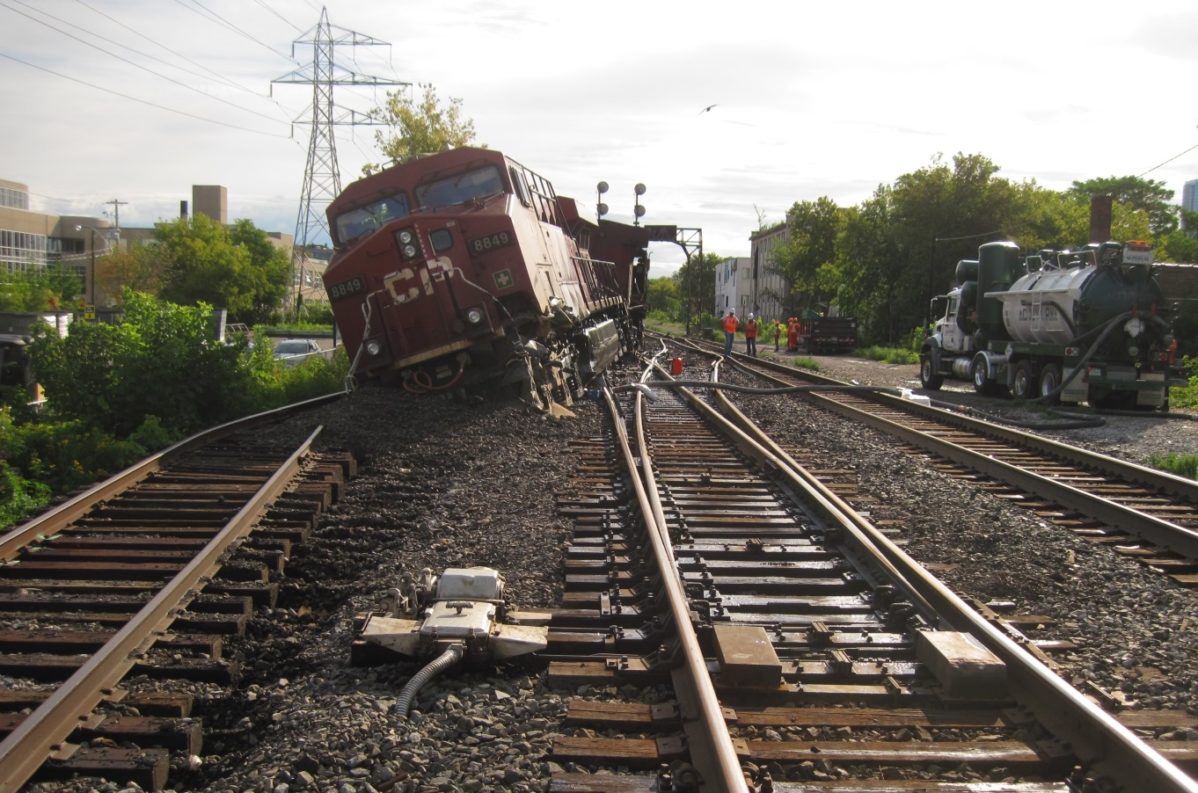CP Rail urges government to adopt recording devices after train derails near George Brown College
In the weeks following a collision of two Canadian Pacific Railway (CP) freight trains nearby George Brown’s Casa Loma campus, advocates and regulators are pressing for new technologies to enhance the safety of freight trains.
The collision, which took place in the early morning of Aug. 21, resulted in about 3,500 litres of diesel fuel leaking from one of the engines, according to an email statement by CP. One of the freight trains was carrying a single car of dangerous goods but that car was not affected by the crash.
CP released a statement the day of the accident indicating that human error may be a factor.
CP issued a press release on Aug. 25 urging the federal government to install Locomotive Video and Voice Recorders (LVVR) to aid the investigation of such accidents.
In the press release, CP’s president and chief operating officer Keith Creel said that this technology would ensure crews were not engaging in prohibited activities, minimizing human error which often causes such accidents.
Jeremy Berry, from CP’s media relations team, explained in an email that the current recordings are privileged and can only be used by the Transportation Safety Board of Canada after an incident has occurred. LVVR, on the other hand, proactively monitors in-cab behaviour.
CP and other rail carriers are already using this technology in the United States. CP says studies show LVVR reduces collisions by 40 per cent per million miles traveled.
Toronto city councillor Josh Matlow has written two letters urging the federal government to adopt new technology, including LVVR or Positive Train Control, where trains can be automatically halted if they come dangerously close to another train.
Another growing concern is replacing the old DOT-111 tanker cars, 72 of which were involved in the explosion in Lac-Mégantic in 2013, and are set to be replaced in the year 2025.
“What we know is that there are DOT-111 tanker cars still being used in CP rail, these should be replaced immediately,” said Matlow. “I even question the movement of dangerous goods through Canada’s most densely populated neighbourhoods.”
Berry confirmed over email that CP’s CEO E. Hunter Harrison has been an active advocate for the immediate removal of DOT-111 cars. He also stated that CP will not have to move DOT-111 cars after Nov. 1 in Canada and encourages shippers to move to updated CPC-1232 and TC-117 cars over the older models.


